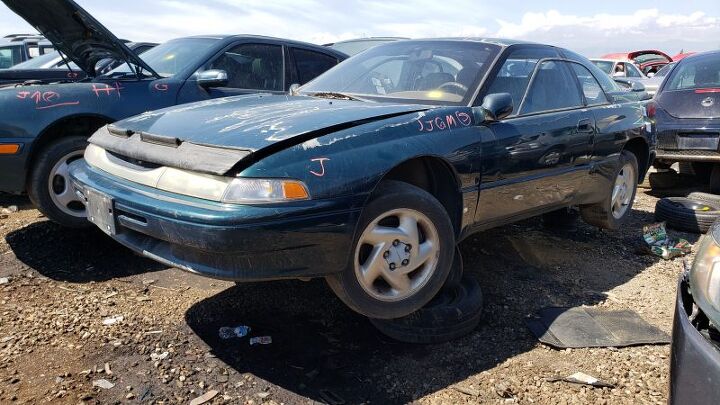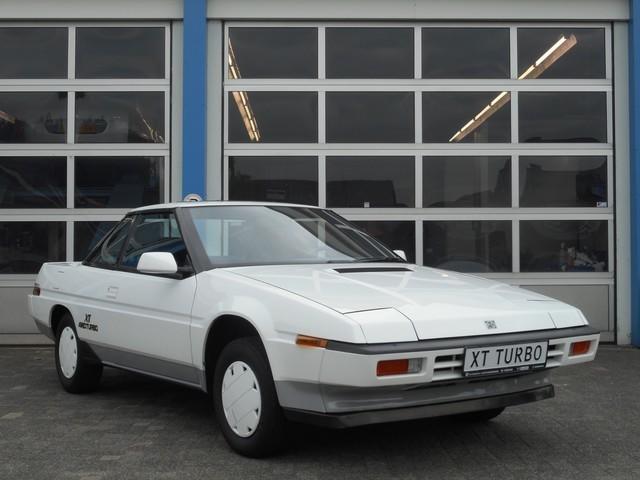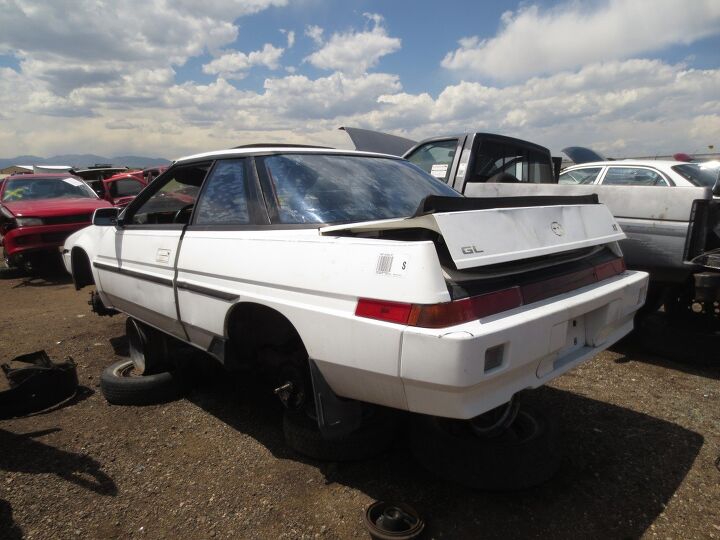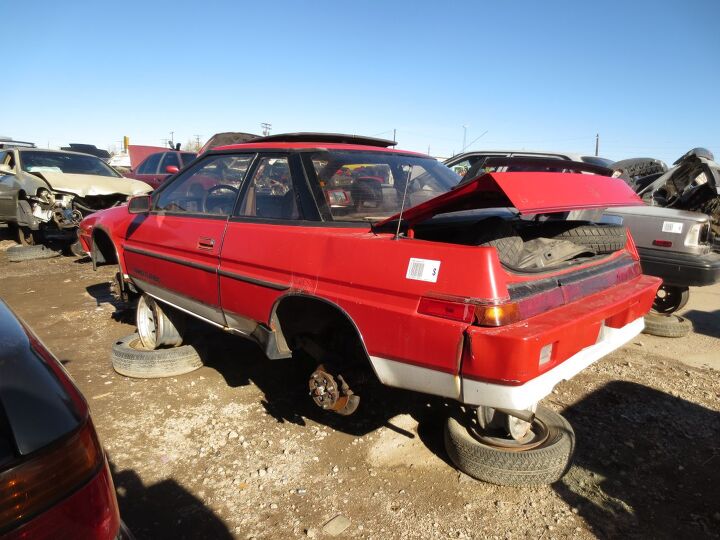#Alcyone
Junkyard Find: 1996 Subaru SVX
One great thing about living in Colorado, where new residents are issued a dog and a Subaru when they arrive, is that I can find examples of just about every Subaru model sold here since the late 1970s in the local car graveyards. That means that I have plenty of opportunities to observe the gloriously weird SVX, once its street days are finished.
Rare Rides: A Subaru XT Turbo 4WD From 1985
Subaru started its first full decade in North America in the Seventies, where it sold the microscopic rear-engined 360. By the Eighties the company had found its niche among crunchy granola types and professors with four-wheel drive wagons like the GL. But Subaru wanted more; specifically customers with more money. Enter the XT.
Junkyard Find: 1987 Subaru XT GL
The Subaru XT is a car you won’t see often in most parts of the country, but Denver junkyards have tremendous quantities of old Subarus and so I see them on a regular basis here. So far, this series has had this ’85 XT Turbo, this ’91 XT, this ’91 XT6, and now today’s ’87 XT.
Junkyard Find: 1985 Subaru XT 4WD Turbo
The junkyards of Colorado don’t have quite the selection of the ones I grew up crawling around in California, but they do have more Subarus than I ever imagined possible. I’ve been a fan of the Subaru XT since it was new— in fact, I’m half-assedly shopping for one now— and so it’s reassuring to find them during my junkyard visits and know that I’ll be able to get parts. Today’s find is a rare turbocharged four-wheel-drive version from the XT’s first model year.



















Recent Comments